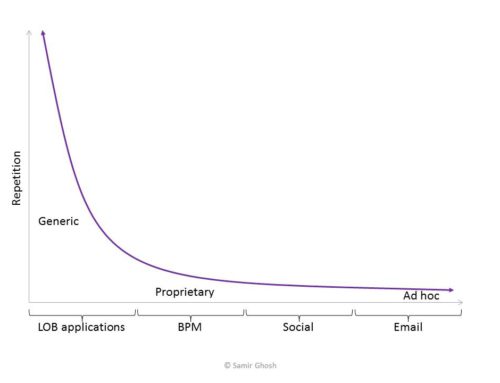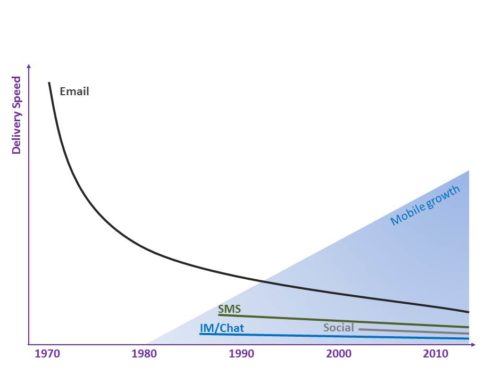Introduction
Periods of rapid technological, economic, cultural and demographic change often breed widespread discontent and vulnerability to anti-establishment demagoguery. Skilled populist politicians are able to exploit this anger and anxiety by promising simple solutions, vowing to restore an idealized “golden era”, and blaming elites, outsiders and other scapegoats for complex societal problems.
However, the high costs of their divisive governance usually only become fully apparent over time, after they have already consolidated power. Eventually, their base supporters recognize the empty rhetoric and failed promises as demagogues fail to deliver on unrealistic pledges. But with vigilance and courage, democratic institutions and civil society have tools to constrain these dangerous figures earlier, before real damage is done.
Constraining populist demagogues requires proactively affirming incremental democratic reform, invoking institutional checks on their power, examining historical precedents, and appealing to shared democratic values. Through sustained, engaged civic participation and reliance on core constitutional principles, free societies can withstand the worst autocratic impulses of populist fervor and hold leaders accountable.
The key lessons from history are that economic and cultural uncertainty breeds demagoguery, but transparently exposing their antidemocratic actions and consequences is necessary early on. This requires bipartisan cooperation, principled dissent within institutions, and diverse grassroots civic mobilization upholding ethics and law. With timely exposure and pressure, democratic societies can manage periods of misguided populism without lasting erosion of rights and norms.
Late 19th Century Populism Exploited Economic Dislocation
In the late 19th century, rapid industrialization and urbanization profoundly disrupted traditional agrarian ways of life. New machines and efficiencies devalued skilled craftsmanship. Wealth increasingly concentrated in cities while rural America felt neglected. Railroad and telegraph networks reoriented commerce away from small towns. Together these massive economic transitions bred ripe conditions for populist discontent (Hofstadter, 1955).
Opportunistic populist leaders harnessed this anti-establishment anger. The People’s Party gained traction in the 1890s Midwest, Plains and South by railing against Wall Street bankers and railroad tycoons who appeared to be exploiting the common farmer. Populists blamed falling crop prices on Northeast elites’ adoption of scarce gold currency, which benefited lenders over indebted farmers. This stoked the mass Free Silver movement to inflate the money supply by moving to unlimited coinage of silver.
Populists promised panaceas like bimetallism would restore farm prosperity and undo urban bankers’ perceived control over the economy. But their simplistic solutions proved unworkable, and the movement collapsed after the economy improved and crop prices rose. By nominating William Jennings Bryan repeatedly, populists helped hand presidential victories to more mainstream parties like McKinley’s business-oriented Republicans in 1896 and 1900 (Ritter & Henry, 1992). The costs of demagogic rhetoric divorced from policy realities became clear.
Early 20th Century Anxiety Breeds New Populism
Economic uncertainty again bred populist fervor in the early 20th centuryProgressive Era. Rapid industrialization continued disrupting traditional commerce, while income inequality grew. Powerful trusts dominated industries like oil and steel. New waves of immigration, particularly from Southern and Eastern Europe, also created cultural anxiety. Opportunists blamed new arrivals for everything from urban poverty to organized crime. This climate gave rise to populists like Louisiana governor Huey Long, who railed against bankers, corporations, and the wealthy establishment for exploiting the working class.
Long enacted some reforms like free textbooks and increased education funding. But his demagoguery fed on cultural divisions, with antisemitic and anti-immigrant undercurrents. While assassinated before achieving national ambitions, Long’s early populist movement reinforced how cultural and economic displacement breeds such figures (Brinkley, 1982). The public gravitates to simplistic explanations and solutions during times of complexity and uncertainty.
Globalization Backlash Fuels New Nationalist Populism
A similar dynamic emerged in recent decades with economic globalization and cultural change. Automation, foreign competition, and offshoring led to manufacturing job losses in many developed countries. Stagnant incomes and unstable gig-economy jobs grew the wealth gap. Changing social mores and increased racial diversity created cultural displacement for once-dominant demographics. These profound economic and demographic shifts bred conditions ripe for populist backlash (Inglehart & Norris, 2016).
Opportunistic populists gained influence by politicizing anger at multinational institutions, politicians, and intellectual elites who seemed indifferent to post-industrial decline outside of metropolitan hubs. Donald Trump harnessed nostalgia for 20th century industrial dominance by vowing to restore mining and manufacturing jobs through tariffs and immigration restrictions. Across Europe, ethno-nationalist parties like France’s National Rally, Italy’s Northern League, and Germany’s AfD attracted support by blending economic protectionism with anti-immigration rhetoric. Figures like Hungary’s Viktor Orbán consolidated illiberal power by politicizing Christian identity against Muslim migration and Soros-funded NGOs. In total, the populist surge represented a mass rejection of the 21st century globalized status quo in favor of reactionary nationalism (Greven, 2016).
Exposing the Costs of Demagogues’ Divisive Governance
However, the costs of demagogic governance often become apparent over time as unrealistic promises collide with complex realities. Despite pledges to restore industrial employment in the Rust Belt, President Trump’s trade wars and tax cuts have not counteracted larger automation and market forces. Domestically, his immigration restrictions have hampered agriculture, construction, and other low-wage sectors dependent on migrants. Abroad, his transactional approach has strained alliances with democratic partners. His racially divisive rhetoric has widened internal social fissures rather than uplifting marginalized communities.
This trend repeats elsewhere. Despite railing against EU integration, Brexit has mired the UK in economic uncertainty and diplomatic isolation. Hungary’s Orbán has eroded democratic checks and balances while enriching his own cronies (Kelemen, 2017). Sweden’s far-right Sweden Democrats party gained influence criticizing establishment failure to integrate migrants, but then obstructed practical reforms to address root problems. Time again, populists’ polemical worldview hinders nuanced governance once in power.
Exposing Demagogues Earlier By Affirming Democratic Values
But enormous damage can be done before governance failures fully expose populists’ hollow rhetoric and overpromising. So how can mainstream parties, civil society and engaged citizens expose dangerous populism earlier on?
First, dominant political parties should forcefully repudiate extremist factions that emerge within tentpole coalitions seeking power for personal ambition rather than progress. For example, in the 1990s Republican leaders like Newt Gingrich strategically harnessed cultural backlash through subtly racist “dog whistles” and hyper-partisan attacks. This betrayed civil rights era principles of racial equality that had brought centrist credibility to the party. It also opened the door for future demagogues like Trump who could outright politicize white identity politics rather than using coded language (Lowndes, 2008). Preventing this toxic enablement of bigotry for electoral gain starves fledgling opportunists of oxygen early on.
Second, leaders need to put forth unifying causes that all can rally around, rather than divisive demagoguery. For instance, President Kennedy calling on America to send a man to the moon and return him safely rallied mass civic participation towards that aspirational goal. Visionary yet inclusive big picture priorities divert energies away from fear-based populism.
Third, broad civic coalitions require courageous supporters and public exemplars of virtue to effectively confront demagogues. Whether religious leaders calling out injustices, journalists exposing lies at risk to themselves, or politicians defecting from their party to defend principles – moral heroes damage rising authoritarians through their brave dissent. Their principled stands rally wider publics to the cause.
Finally, sustained grassroots activism centered on democratic values provides constant reinforcement that extremists are illegitimate outliers. Multi-ethnic, multi-faith watchdogs upholding pluralism play an essential role signaling to people that demagogues do not represent the mainstream. With constant effort, societies can expose dangerous populists early by affirming incremental reforms, national missions, courageous dissent, and inclusive coalition-building across lines of division.
Limiting Demagogues Through Institutional Checks and Balances
In addition to an engaged civil society, institutional checks and balances provide critical safeguards against burgeoning authoritarianism. The independent judiciary striking down unlawful policies, legislators blocking extreme proposals, and watchdogs overseeing bureaucratic abuse all constrain overreach from rogue executives.
For example, the Watergate scandal represented both civil society whistleblowers and formal oversight mechanisms revealing Nixon’s transgressions. Congressional hearings exposed crimes despite Republican control, while justices ordered the release of incriminating tapes. These institutions imposed accountability and forced resignation despite Nixon’s popularity.
Similarly, courts have checked Trump’s unilateral actions on issues like immigration and election subversion where executive powers are limited. While imperfect, the constitutional system has prevented the worst impulses of these demagogues from fully imposing their will. Anarchy is held in balance by calibrated restraints.
Conclusion
Rapid change empowers populist demagogues like Donald Trump, but eventually their governance failures expose empty rhetoric if made transparent. Different factions in society can take these tangible steps to constrain Trump specifically:
- Democrats should continue fact-based oversight through Congressional committees to substantiate unlawful abuses of power. This provides evidence contradicting administration denials.
- Educated “elites” and activists should partner with media to elucidate Trump’s policies actually exacerbating displaced workers’ insecurities rather than relieving them. His false promises to neglected communities must be exposed.
- Republican leaders must show moral courage by putting ethics and rule of law over partisan loyalty. The choice is constitutional democracy or authoritarianism. There are no neutral bystanders.
- Mainstream Republicans should field alternative candidates to challenge Donald Trump in the 2024 Republican presidential primary. This would offer traditional conservatives an ethical alternative vision based on inclusive values and constructive policies, rather than racial division and demagoguery. Putting forward other GOP primary options besides Trump would provide principled Republican voters a choice beyond blind loyalty to Trumpism.
- Protesting citizens must remain non-violent to occupy the moral high ground. Peaceful dissent shows respect for democracy while exposing demagogues as lawless outliers.
In summary, bipartisan accountability, principled dissent within institutions, elucidating policy harms, and non-violent activism exposing Trump’s affront to democratic values can persuade supporters to abandon this demagogue without eroding norms long-term. Truth and light remain the ultimate disinfectants against lies and darkness.
References
- Brinkley, A. (1982). Voices of Protest: Huey Long, Father Coughlin and the Great Depression. Vintage Books.
- Greven, T. (2016). The rise of right-wing populism in Europe and the United States. Friedrich Ebert Stiftung.
- Hofstadter, R. (1955). The age of reform: From Bryan to FDR. Vintage Books.
- Inglehart, R., & Norris, P. (2016). Trump, Brexit, and the rise of populism: Economic have-nots and cultural backlash. Harvard Kennedy School Faculty Research Working Paper Series.
- Kelemen, R. D. (2017). Europe’s other democratic deficit: National authoritarianism in Europe’s democratic union. Government and Opposition, 52(2), 211-238.
- Lowndes, J. (2008). From the New Deal to the New Right: Race and the Southern Origins of Modern Conservatism. Yale University Press.
- Ritter, G., & Henry, J. (1992). American political populism in the 1890s. History Teacher, 25(2), 227-240.








Leave A Comment